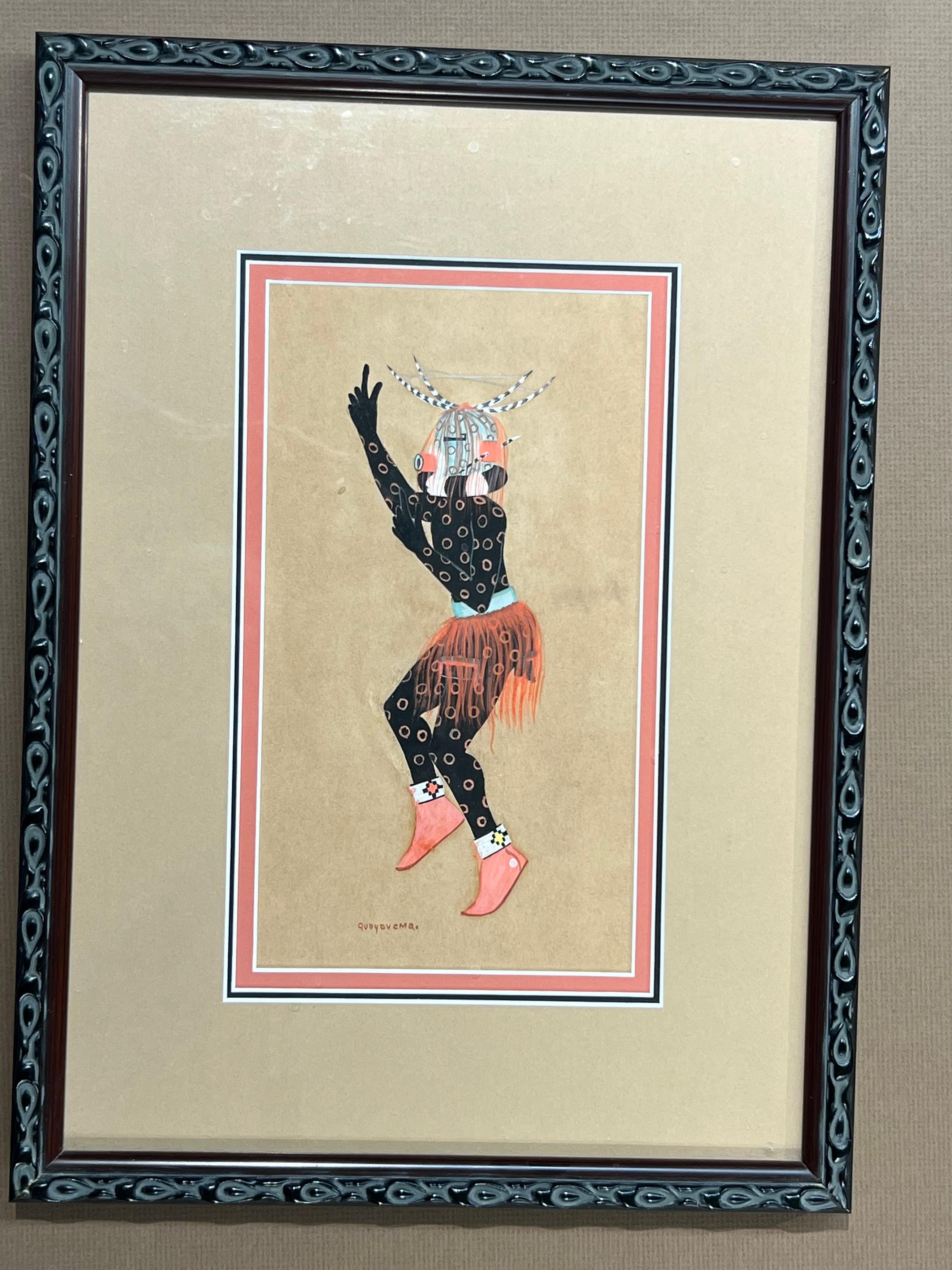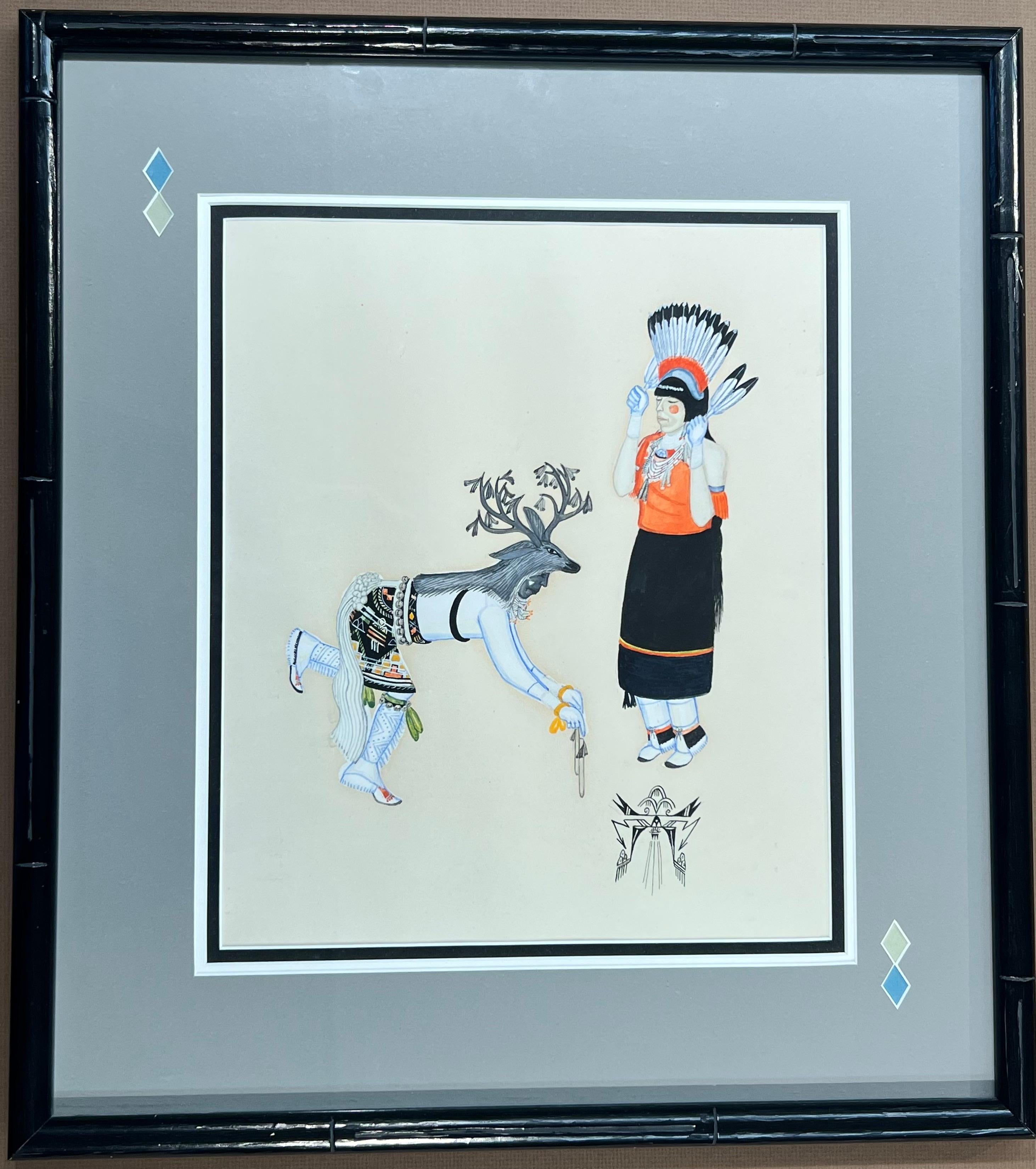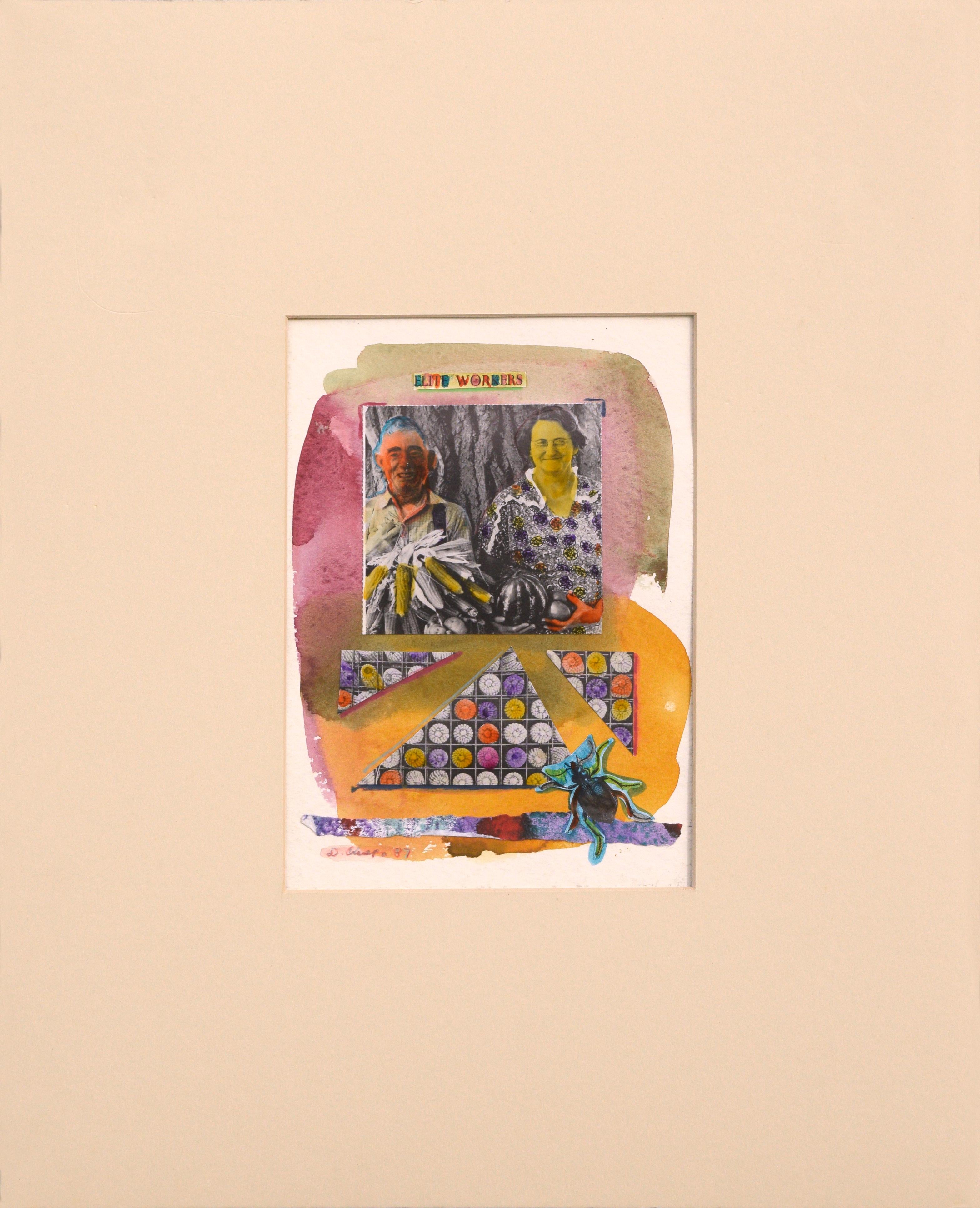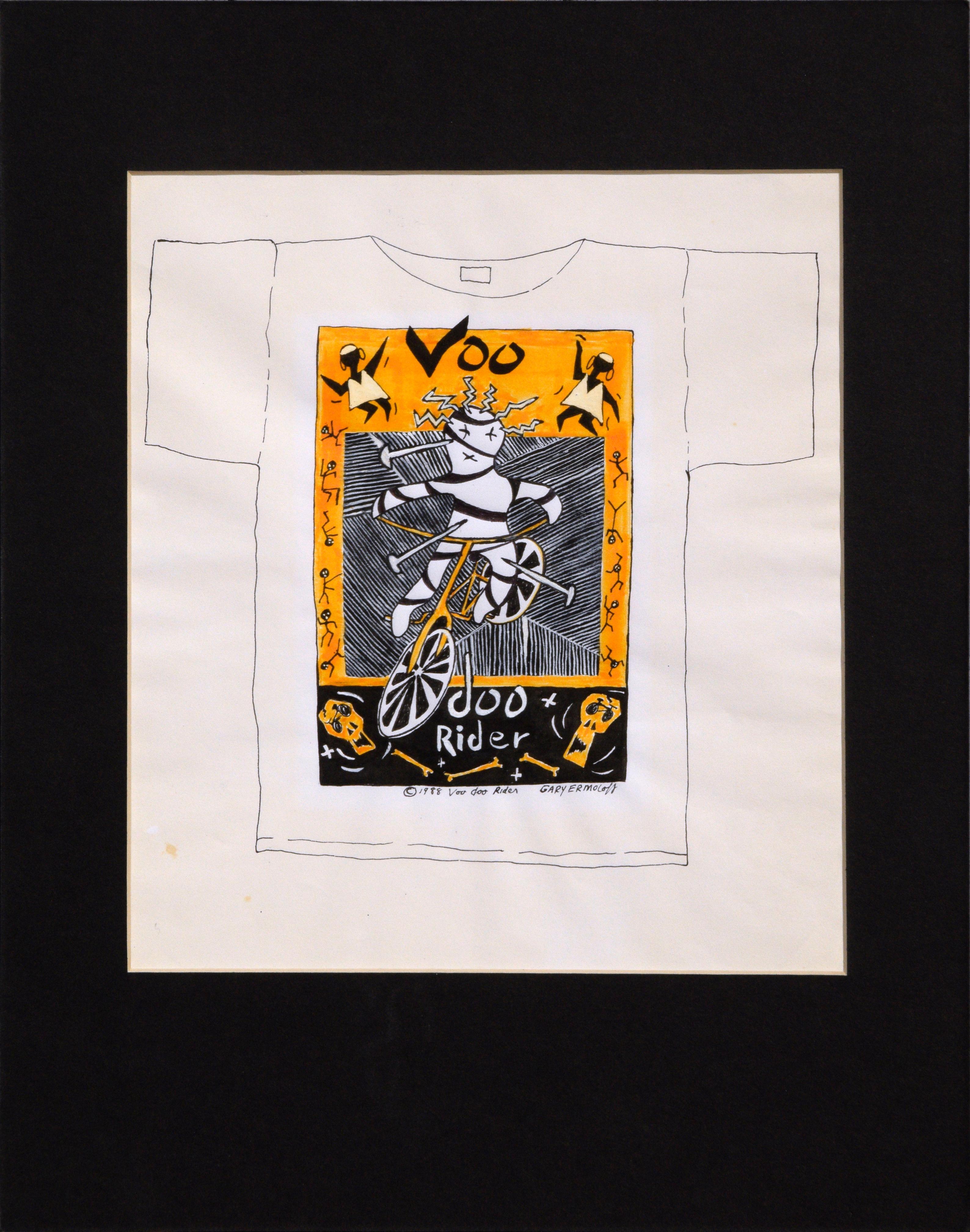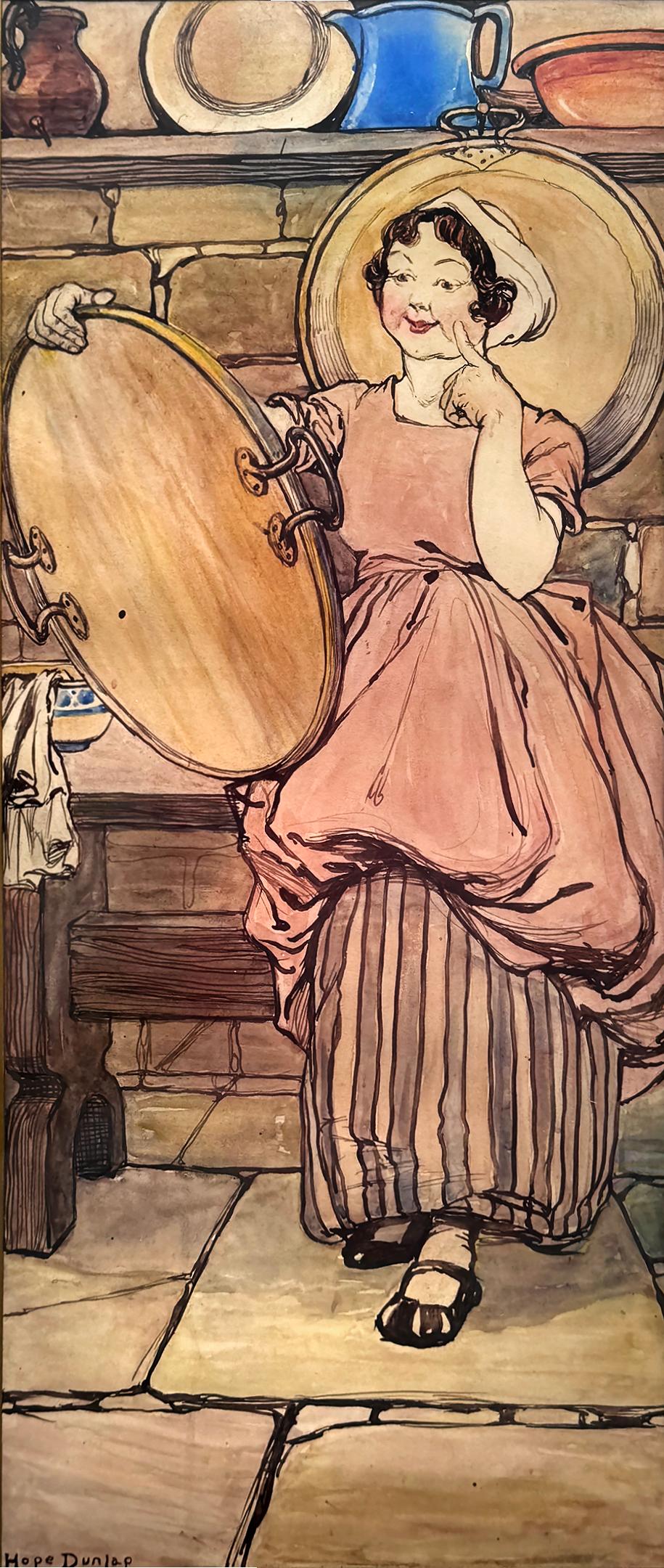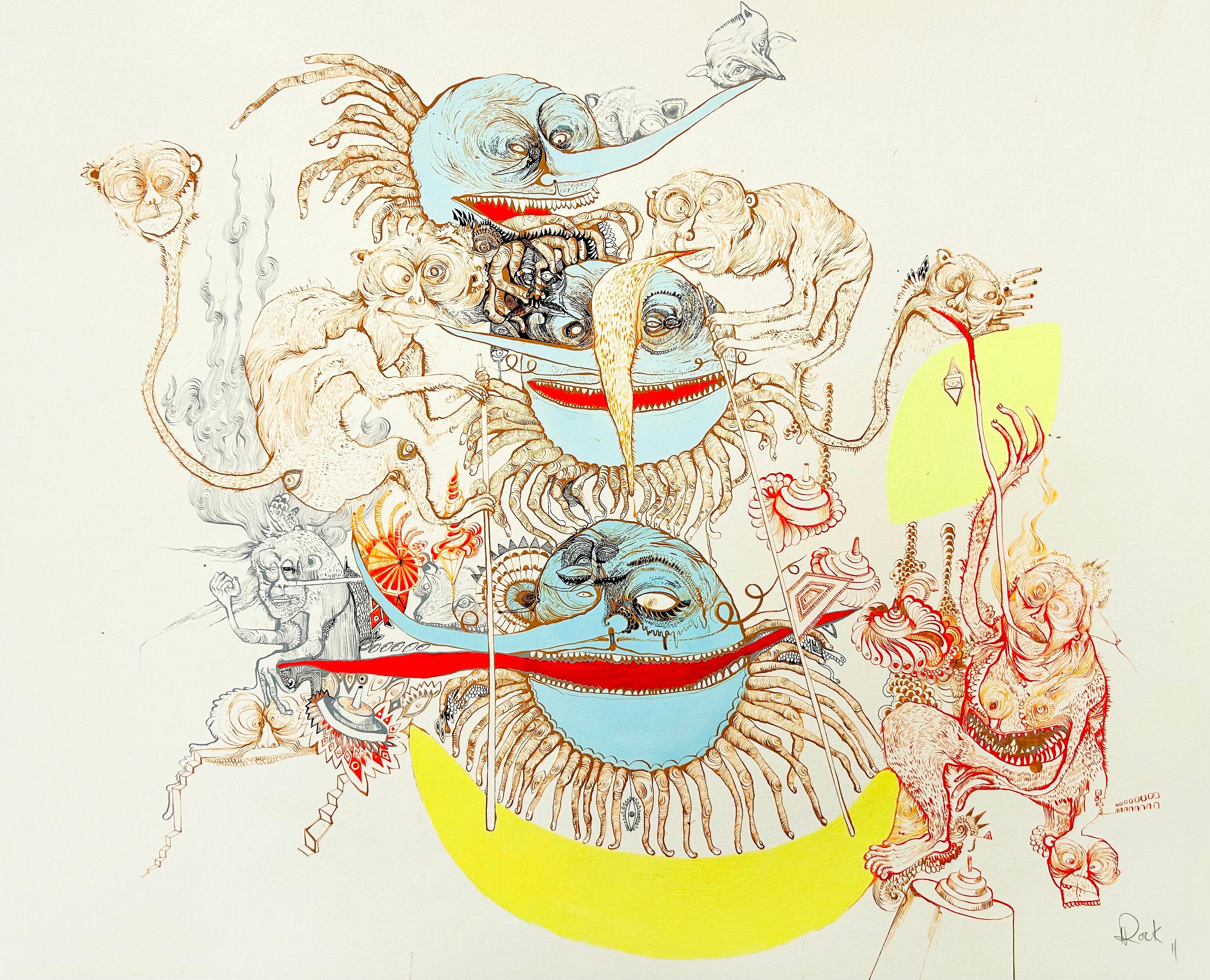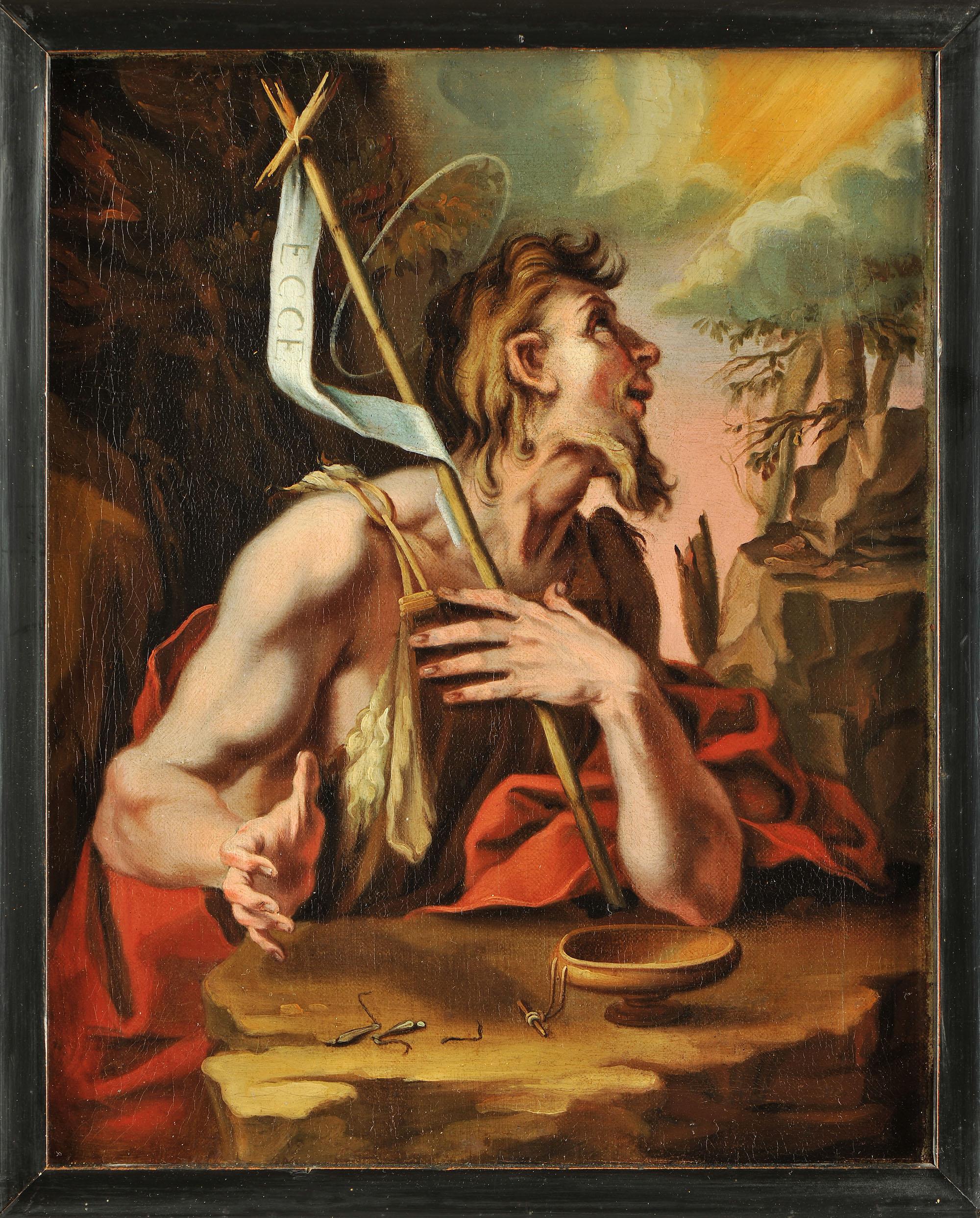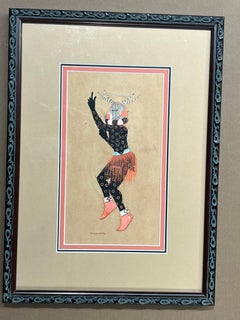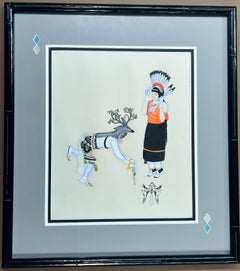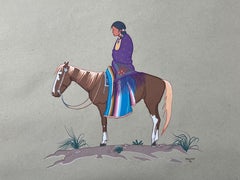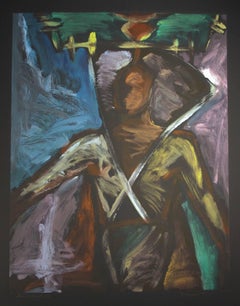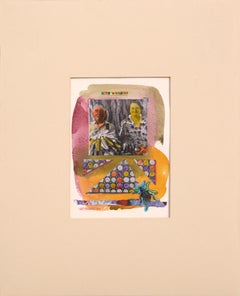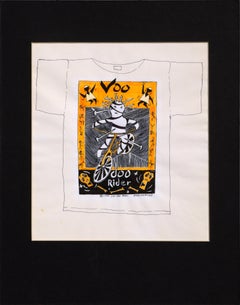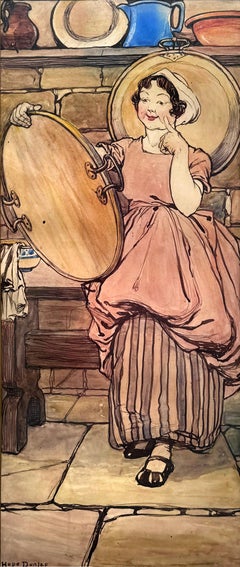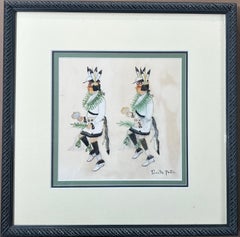
Pueblo Dancers, painting, by Tonita Pena, Cochiti, Pueblo, Santa Fe, Native Amer
View Similar Items
Want more images or videos?
Request additional images or videos from the seller
1 of 11
Tonita PeñaPueblo Dancers, painting, by Tonita Pena, Cochiti, Pueblo, Santa Fe, Native Amer
$2,400List Price
About the Item
About the Seller
4.9
Vetted Professional Seller
Every seller passes strict standards for authenticity and reliability
Established in 1966
1stDibs seller since 2015
99 sales on 1stDibs
Typical response time: 1 hour
Authenticity Guarantee
In the unlikely event there’s an issue with an item’s authenticity, contact us within 1 year for a full refund. DetailsMoney-Back Guarantee
If your item is not as described, is damaged in transit, or does not arrive, contact us within 7 days for a full refund. Details24-Hour Cancellation
You have a 24-hour grace period in which to reconsider your purchase, with no questions asked.Vetted Professional Sellers
Our world-class sellers must adhere to strict standards for service and quality, maintaining the integrity of our listings.Price-Match Guarantee
If you find that a seller listed the same item for a lower price elsewhere, we’ll match it.Trusted Global Delivery
Our best-in-class carrier network provides specialized shipping options worldwide, including custom delivery.More From This Seller
View AllCorn Kachina, by Riley Sunrise, Quoyavema, Hopi, Kachina, Dancer, painting
Located in Santa Fe, NM
Corn Kachina, by Riley Sunrise, Quoyavema, Hopi, Kachina, Dancer, painting
Artist Signature - Riley Sunrise (1914-2006) Quoyavema “Another of the earlier Hopi artists, Riley Sunrise (Quoyavema) worked with Fred Kabotie and Waldo Mootzka in illustrating John Louw Nelson’s Rhythm for Rain. He is also known as Quoyavema or Kwayeshva, according to Nelson. His paintings are comparable to Fred Kabotie’s, with some of them showing more action and most of them revealing less detail. Sunrise is represented in the collections of the Denver Art Museum, Gilcrease Institute (Tulsa), and the Southwest Museum. The Museum of the American Indian in New York has an extensive collection of his paintings of native Hopi dances.” (Clara Lee Tanner: Southwest Indian...
Category
1940s Tribal Figurative Paintings
Materials
Paint, Paper
Deer Dance, painting by Tonita Pena, Santa Fe, Cochiti, Pueblo, male, female
Located in Santa Fe, NM
Deer Dance, painting by Tonita Pena, Santa Fe, Cochiti, Pueblo, male, female
Tonita Peña (born 1893 in San Ildefonso, died 1949 in Kewa Pueblo, New Mexico) was born as Quah Ah (meaning white coral beads) but also used the name Tonita Vigil Peña and María Antonia Tonita Peña. Peña was a renowned Pueblo artist, specializing in pen and ink on paper embellished with watercolor. She was a well-known and influential Native American artist and art teacher of the early 1920s and 1930s.
Tonita Peña was born on May 10, 1893, at San Ildefonso Pueblo, to Ascensión Vigil Peña and Natividad Peña of San Ildefonso Pueblo, New Mexico. When she was 12, her mother and younger sister died, as a result of complications due to the flu. Her father was unable to care for her and she was taken to Cochití Pueblo and was brought up by her aunt Martina Vigil Montoya, a prominent Cochití Pueblo potter. Peña attended St. Catherine Indian School in Santa Fe.
Edgar Lee Hewett, an anthropologist involved in supervising the nearby Frijoles Canyon excavations (now Bandelier National Monument) was instrumental in developing the careers of several San Ildefonso “self-taught” artists including Tonita Peña. Hewett purchased Peña's paintings for the Museum of New Mexico and supplied her with quality paint and paper. Peña began gaining more notoriety by the end of the 1910s selling an increasing amount of her work to collectors and the La Fonda Hotel. Much of this early work was done of Pueblo cultural subject matter, in a style inspired by historic Native American works, however, her use of an artist's easel and Western painting mediums gained her acceptance among her European-American contemporaries in the art world. At the age of 25, she exhibited her work at museums and galleries in the Santa Fe and Albuquerque area.
In the early 1920s, Tonita did not know how much her painting sold for at the Museum of New Mexico, so she wrote letters to the administrators because a local farmer was worried that she got paid too little.
In the 1930s Peña was an instructor at the Santa Fe Indian School and at the Albuquerque Indian School and the only woman painter of the San Ildefonso Self-Taught Group, which included such noted artists as Alfonso Roybal, Julian Martinez, Abel Sánchez (Oqwa Pi), Crecencio Martinez, and Encarnación Peña. As children, these artists attended San Ildefonso day school which was part of the institution of the Dawes Act of 1887, designed to indoctrinate and assimilate Native American children into mainstream American society.
In 1931, Tonita Peña exhibited at the Exposition of Indian Tribal Arts which was presented at the Grand Central Art Galleries in New York City. Works from this exhibition were shown at the 1932 Venice Biennial. That year is the only time Native American artists have shown in the official United States pavilion at that biennial, and Tonita Peña's paintings were part of that exhibition.[1 Her painting Basket Dance, that had shown in the Venice Biennial was acquired by the Whitney Museum of American Art in New York for $225. This was the highest price paid up to this time for a Pueblo painting...
Category
1940s Tribal Figurative Drawings and Watercolors
Materials
Paint, Paper
Apache Woman on Horseback, by Allan Houser, Haozous, painting, paper, horse
By Allan Houser
Located in Santa Fe, NM
Apache Woman on Horseback, by Allan Houser, Haozous, painting, paper, horse
Painting on paper from 1946 by master artist Allan Houser. Ft. Sill Chi...
Category
1940s Contemporary Figurative Drawings and Watercolors
Materials
Watercolor
Gahn Portrait # 121, Darren Vigil Gray, pastel on paper, black, red, Apache
By Darren Vigil Gray
Located in Santa Fe, NM
Gahn Portrait # 121, Darren Vigil Gray, pastel on paper, black, red, Apache
painting on paper
signed and titled by the artist on the front
Category
1990s Contemporary Abstract Paintings
Materials
Paint, Paper
Gahn Portrait 39, Darren Vigil Gray Apache dancer, work on black paper Indian
By Darren Vigil Gray
Located in Santa Fe, NM
Gahn Portrait 39, Darren Vigil Gray Apache dancer, work on black paper
Category
1990s Contemporary Figurative Drawings and Watercolors
Materials
Paper, Pastel
Little Deer, work on paper by Rick Bartow, red, white, pink, blue, black, green
By Rick Bartow
Located in Santa Fe, NM
Little Deer, work on paper by Rick Bartow, red, white, pink, blue, black, green,
Category
1990s Contemporary Animal Drawings and Watercolors
Materials
Paper, Pastel
You May Also Like
"Elite Workers", Small-Scale Modern Figural Collage w Watercolor by Dick Crispo
By Dick Crispo
Located in Soquel, CA
Modern small-scale watercolor and collage, a mixed media composition featuring a modified photograph with colorful watercolor accents by Dick Crispo (American, b. 1945). Titled "Elite Workers" at the top. Signed and dated "D. Crispo 87" in the lower left corner. Presented in a cream mat with foamcore backing. No frame. Paper size: 10"H x 7"W
Dick Crispo, born in New York City on January 13, 1945, has resided on the Monterey Peninsula since 1955. An award winning artist, Crispo has studied at the Carmel Art Institute under John Cunningham and Sam Colburn...
Category
1980s Contemporary Figurative Drawings and Watercolors
Materials
Paper, Watercolor, Magazine Paper, Photographic Paper, Pen
Voodoo Rider Original 1980's T-Shirt Design Drawing
By Gary Ermoloff
Located in Soquel, CA
Original drawing for a late 1980's T-shirt design for Voodoo Rider by Gary Ermoloff (American, b. 1949). Dated, titled, and signed along the bottom edge ...
Category
1980s Street Art Figurative Paintings
Materials
Paper, Acrylic, Pen, Permanent Marker
$520 Sale Price
20% Off
"The Poor Little Bridesmaid" - Female Illustrator - Golden Age of Illustration
Located in Miami, FL
"The poor little bridesmaid ... in her pink cotton gown ... though doubtless, there never was such a pretty girl."
A kitchen scene is depicted with a young bridesmaid admiring her f...
Category
1910s American Realist Figurative Drawings and Watercolors
Materials
Watercolor, Paper, India Ink, Pen
Oxford all night party 1983 after a picture by Dafydd Jones, Painting
By Manuel Santelices
Located in Miami Beach, FL
Movies, TV and magazines are constant source of inspiration. Fame, as fleckring and shallow it can be sometimes, is very intriguing to him.
The worlds of fashion, society and pop cu...
Category
21st Century and Contemporary Contemporary Figurative Drawings and Water...
Materials
Ink, Gouache, Paper
Young Love: Walking to School, Four Seasons Calendar Illustration
By Norman Rockwell
Located in Fort Washington, PA
Illustrated for the 1949 Four Seasons Calendar, published by Brown and Bigelow.
A young girl holds a freshly-picked bouquet of flowers as she strolls alongside a boy who carries he...
Category
1940s American Realist Figurative Paintings
Materials
Watercolor, Ink, Paper
"Pleased to See You, " Crash, Pop Art, Street Art Graffiti
By John Crash Matos
Located in New York, NY
Crash
Pleased to See You, 1989
Signed and dated lower left
Watercolor and ink on paper
30 x 20 1/2 inches
A contemporary of Keith Haring and a modern-day master of this present day ...
Category
1980s Street Art Figurative Paintings
Materials
Paper, Ink, Watercolor
Recently Viewed
View AllMore Ways To Browse
Native American Indian Woman
San Ildefonso
Maria Farmer
Jean Louis Ernest Meissonier
Mark Tansey
Drawings And Watercolor Indonesia
Enigma Watch
Frank J Golden
Katz Pastel
Mexican Amate
Moulin Rouge Costume
Slowinski Painting
The Plaza Hotel Nyc
Encre De Chine
Joyce Francis
My Sin Lanvin
Vermont Winooski
Charles Mahoney
